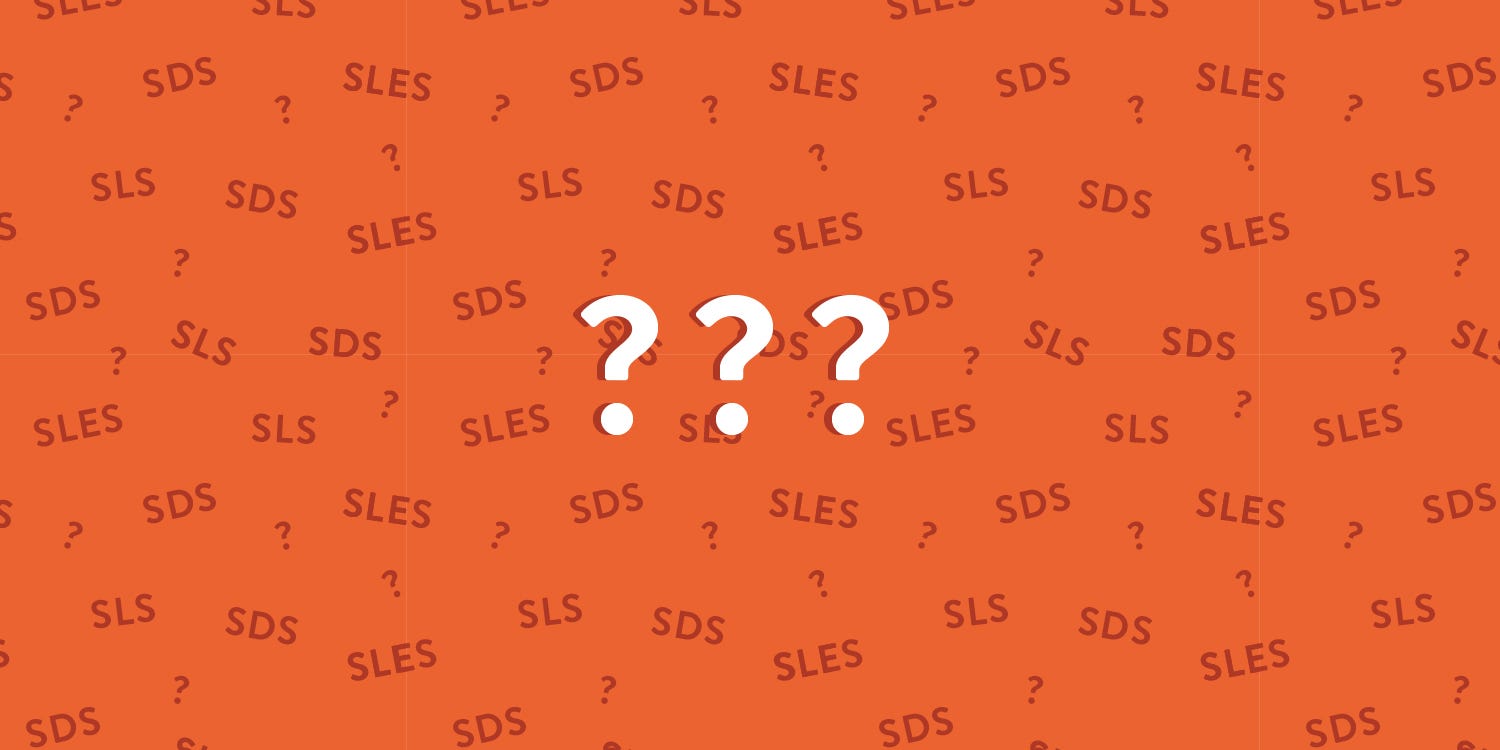Think Dirty Ingredient Breakdown: SDS vs. SLS vs. SLES

If you are a conscious beauty shopper who values clean, safe ingredients you may recognize these abbreviations from common household products. Brands like Dove, Pantene, Softsoap, Dawn, and Colgate that most people use every day, often contain SLS or SLES. SLS stands for Sodium Lauryl Sulfate, also known as SDS, Sodium Dodecyl Sulfate. SLES stands for Sodium Laureth Sulfate, sometimes written as Sodium Lauryl Ether Sulfate.

SLS: Sodium Lauryl Sulfate, also known as SDS: Sodium Dodecyl Sulfate
SLES: Sodium Laureth Sulfate, also known as Sodium Lauryl Ether Sulfate.
You may be surprised to find out that SLS and SDS are actually the exact same ingredient, while SLES is quite different.
Companies tend to use SLES as an ingredient in personal care and cleaning products because it is an extremely cheap and effective surfactant and foaming agent — basically what goes into your soap or shampoo to make it foam. SLES has been a controversial ingredient in the worlds of clean and green beauty for a long time, with conflicting opinions coming from all sides. It is also on David Suzuki’s Dirty Dozen list, adding to its bad reputation. The main problem with SLES is that when going through a process called ethoxylation, there is a potential for contamination with a possible carcinogen called 1,4 dioxane (3,4). In order to ensure zero contamination, it has to be vacuum stripped and there is no way to know whether or not companies do this. A 1990 Danish study that assessed 76 personal care products: shampoos, body gels, soaps, etc. found 1,4-dioxane in 82% of the cosmetic products and 85% of the dishwashing products (4). SLES is currently found in many large name brand household cleaners and detergents, shampoos, hand soaps, body wash, and many more (1).
SLS and SDS are also effective detergents and found mainly in household cleaning products. SLS is not proven to be carcinogenic but if you are someone that is mindful of the ingredients in your household cleaning products and personal care products, this might be an ingredient to keep an eye out for. SLS does not have the same potential to be contaminated with possible carcinogen 1–4 dioxane as SLES does. However, there is evidence from the same study that SLS can irritate the skin with long-term exposure and is toxic to rats in high doses and concentrations. The concentration of SLS can range from 0.01% to 50% in cosmetic products and 1% to 30% in cleaning products.

Some brands, such as Seventh Generation, that use SLS in their products, have had their products certified by the USDA Biobased program to further ensure safety.
On Think Dirty SLS is rated a 4 in accordance with this information and all the relevant research.
It is important to acknowledge how untested and unregulated chemicals are in North America. Most chemicals on the market and in consumer products have not been tested. Even though these ingredients are far from being the most harmful on the market, we encourage everyone to be mindful of the ingredients and always put your health and safety first.
Disclosure: Think Dirty is a professional review and product rating website and mobile app that receives compensation from the companies whose products we review and rate. We are independently owned and the opinions expressed here are our own interpretation of trusted sources.

